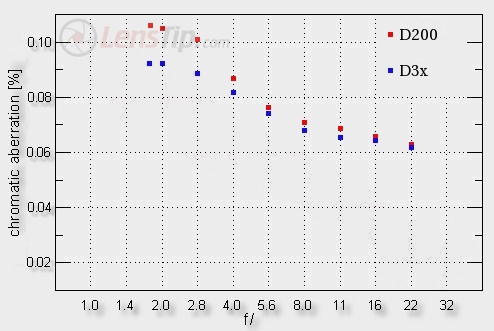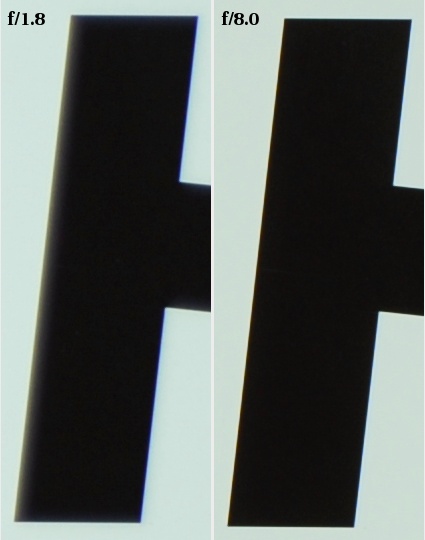Nikon Nikkor AF 50 mm f/1.8D
5. Chromatic aberration

One thing needs some clarification. Attentive Readers might be surprised by the fact that the aberration on a smaller D200 sensor is higher than on the D3x full frame. It’s an effect connected with the measuring units, adopted by us. If you expressed the aberration in pixels its level would be bigger on the D200. The problem with expressing the aberration in pixels is that such a method hurts cameras with smaller cells. Our method consists of giving percentage values, obtained by dividing the pixel measurement result of aberration by the dimension of a frame, also in pixels. It allows us to be independent of the pixels size but it also forces us to
divide full frame measurements by a higher number with the effect of a lower percentage score; it can be seen on our graph.
Please Support UsIf you enjoy our reviews and articles, and you want us to continue our work please, support our website by donating through PayPal. The funds are going to be used for paying our editorial team, renting servers, and equipping our testing studio; only that way we will be able to continue providing you interesting content for free. |
- - - - - - - - - - - - - - - - - - - - - - - - - - - - - - - - - - - - - - - - - - - - - - - -
 |






